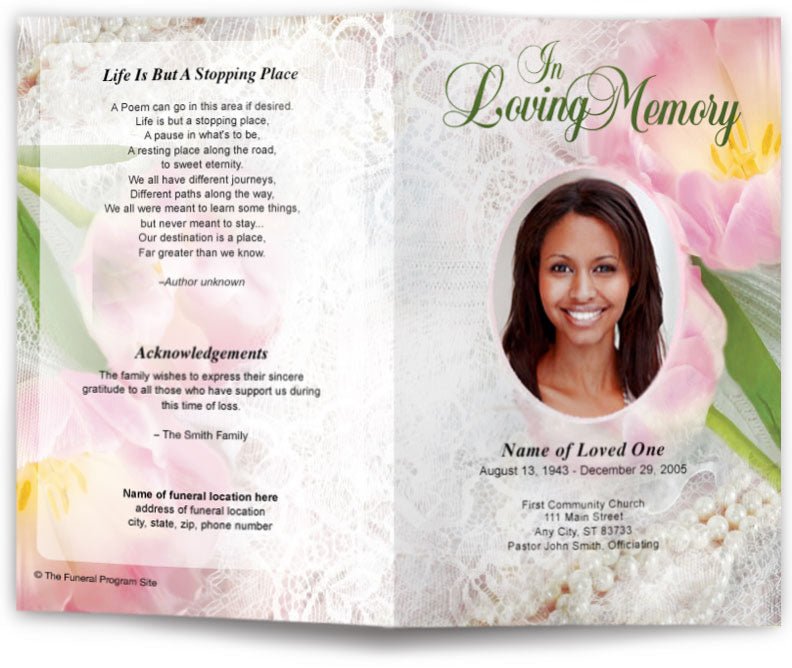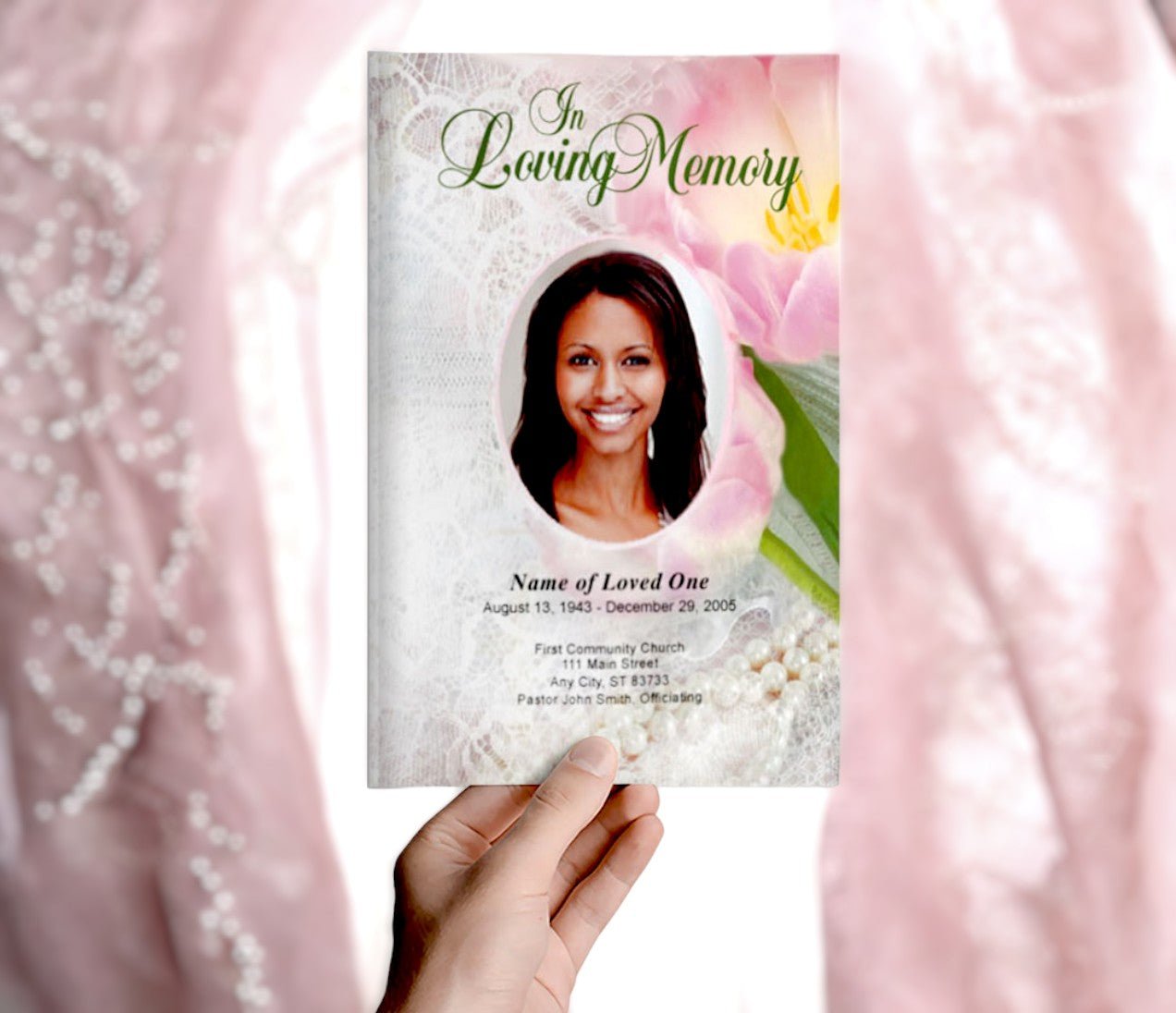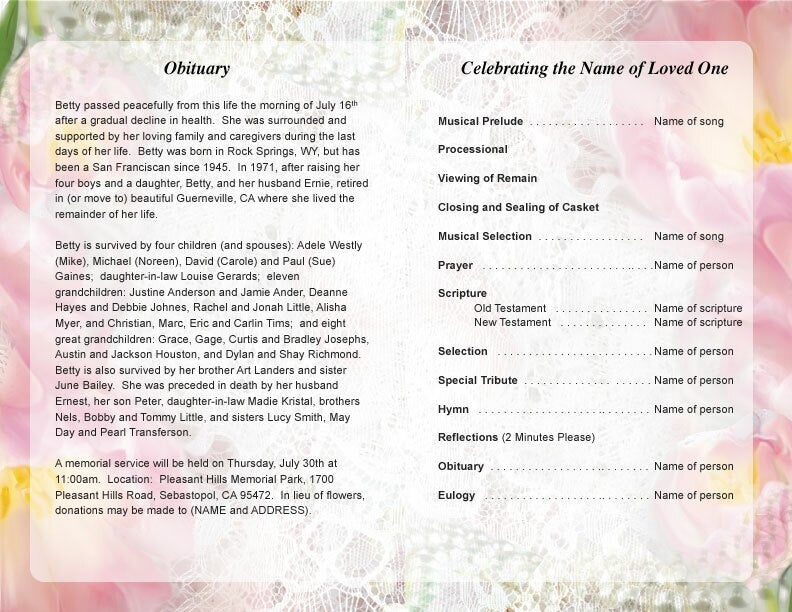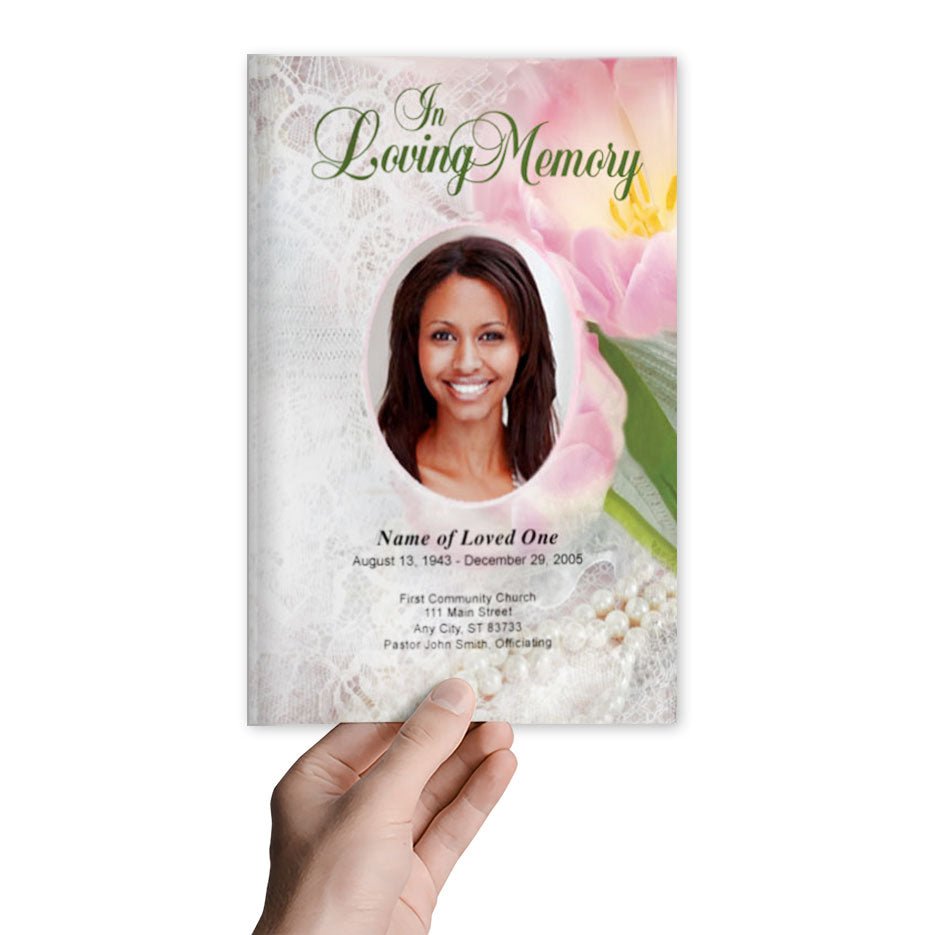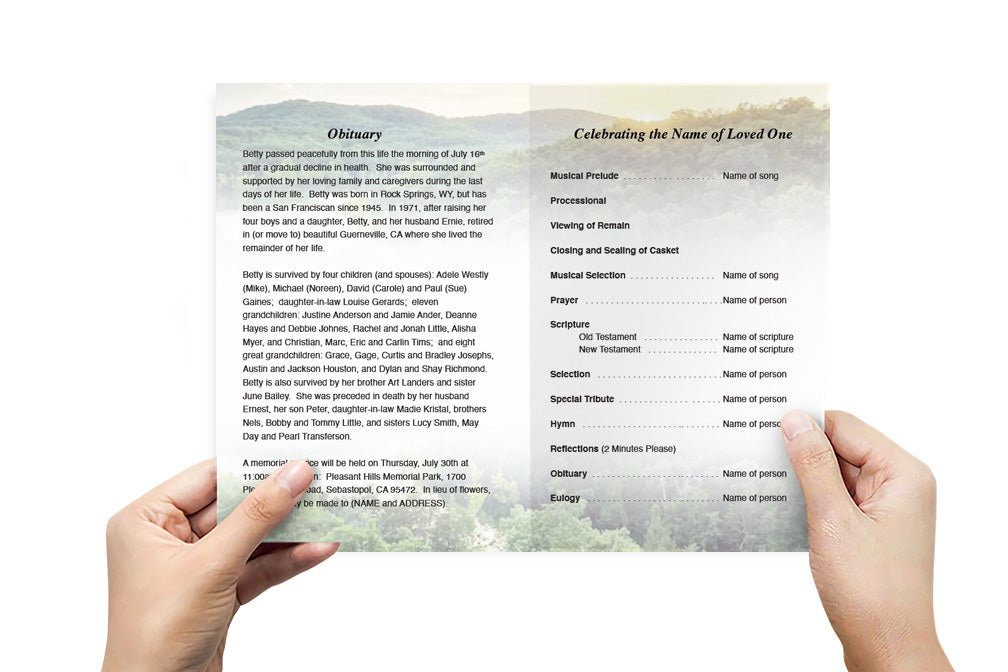Cultural Considerations When Designing Funeral Programs for Different Religions

A funeral program serves as both a guide for the service and a keepsake for attendees, reflecting the beliefs, traditions, and customs of the deceased’s faith. Different religions have unique funeral rites, symbols, and design preferences, and understanding these cultural considerations is essential when creating a respectful and meaningful funeral program.
Christian Funeral Programs
Christian funeral programs typically include prayers, hymns, and scripture readings. The design is usually elegant and reverent, incorporating religious symbols.
Design Elements
- Crosses, doves, or angel imagery
- Soft or neutral colors such as white, gold, navy, or pastels
- Bible verses such as Psalm 23 or John 14:1-3
- Traditional fonts like Times New Roman or Garamond
Content Considerations
- Order of service with opening prayer, readings, hymns, eulogy, and benediction
- A favorite scripture verse or spiritual reflection
- Acknowledgments and thank-you messages from the family
Denominational Variations
Catholic funerals may include the Rosary, Mass, and Holy Communion, and the program may list the liturgical readings. Baptist and Protestant funerals often emphasize praise and worship songs, with a focus on celebration of life.
Catholic Funeral Programs
Catholic funeral programs are structured and often follow the Order of the Mass if a full Requiem Mass is included.
Design Elements
- Religious imagery such as the crucifix, rosary beads, or the Virgin Mary
- Gold, white, or deep purple as primary colors
- Elegant typography with serif fonts for scripture and prayers
Content Considerations
- The Order of the Catholic Funeral Mass
- Specific prayers, such as the Hail Mary, Our Father, and Nicene Creed
- Acknowledgment of religious affiliations such as Knights of Columbus or parish community involvement
Jewish Funeral Programs
Jewish funerals follow a modest and simple approach, focusing on prayer and tradition. The funeral program should be minimalist and respectful.
Design Elements
- Star of David or Hebrew lettering
- Blue, white, or earth-toned colors
- Traditional Hebrew phrases such as "May their memory be a blessing"
Content Considerations
- No images of the deceased, as some Orthodox traditions prohibit this
- List of Psalms recited, such as Psalm 23 or Psalm 121
- Shiva details, including information on the post-funeral mourning period
Variations in Jewish Traditions
Reform Judaism allows for more personalization, including photos and personal reflections. Orthodox Judaism maintains a strictly religious and simple approach.
Muslim Funeral Programs
Islamic funeral services follow a structured, religious practice, and the funeral program should focus on prayer and respect.
Design Elements
- Islamic calligraphy, crescents, or geometric patterns
- Traditional colors such as green, white, or gold
- Simple, clean layouts with Arabic script
Content Considerations
- Qur'anic verses in Arabic and English, such as Surah Al-Fatiha or Surah Yasin
- The Janazah prayer sequence, outlining the funeral prayer
- Dua, prayers for the deceased, and charitable giving options in their name
It is important to avoid using images of the deceased, as some Islamic traditions discourage personal portraits in religious materials.
Hindu Funeral Programs
Hindu funerals emphasize spirituality, reincarnation, and prayers for the soul’s journey. The funeral program often includes Sanskrit prayers and cultural imagery.
Design Elements
- Om symbol, lotus flower, or oil lamp (Diya)
- Vibrant colors like saffron, gold, and deep red
- Traditional script fonts for Sanskrit verses
Content Considerations
- Bhajans, devotional songs, and mantras
- Details about the cremation and post-funeral rites such as Shraddha ceremonies
- Favorite Hindu scriptures such as Bhagavad Gita or Rigveda quotes
Some families prefer a simpler, modern approach, while others incorporate detailed spiritual readings.
Buddhist Funeral Programs
Buddhist funerals focus on peace, meditation, and enlightenment. The funeral program should be calm and respectful, emphasizing prayers and mindfulness.
Design Elements
- Bodhi tree, lotus flowers, or Buddhist wheel (Dharma Chakra)
- Soft colors such as light blue, beige, or gold
- Calm, flowing script for Buddhist scriptures
Content Considerations
- Chanting of Buddhist prayers such as the Metta Sutta or Heart Sutra
- Acknowledgment of the monk or spiritual leader conducting the service
- Tributes emphasizing wisdom, kindness, and the cycle of life
Traditional African and African-American Funeral Programs
Many African and African-American funeral programs incorporate religious, cultural, and community elements.
Design Elements
- African patterns, kente cloth borders, or Adinkra symbols
- Deep earth tones like brown, gold, and deep red
- Bold script and serif fonts for strong visual impact
Content Considerations
- Celebration of life approach that is uplifting and spiritual
- Call-and-response prayers or gospel song lyrics
- Acknowledgment of family and community involvement
For African-American Christian funerals, the program may feature traditional gospel hymns and eulogies given by church members.
Chinese Funeral Programs
Chinese funerals have strong ancestral and spiritual elements, often incorporating symbols of longevity, luck, and respect.
Design Elements
- Red for good fortune, white, or black backgrounds
- Lotus flowers, cranes, or traditional Chinese characters
- Classic Chinese calligraphy paired with modern fonts
Content Considerations
- Ancestor blessings and Confucian quotes
- Taoist, Buddhist, or Christian influences based on family beliefs
- The schedule of Buddhist chanting or ancestral offerings
Some Chinese Christian families prefer a more Western-style funeral program with traditional hymns.
Final Considerations for Culturally Respectful Funeral Programs
When designing a funeral program for different religions and cultures, respect for traditions is key.
Tips for Cultural Sensitivity
- Research religious customs before finalizing the design
- Consult with family members to ensure cultural and spiritual accuracy
- Use appropriate colors and symbols based on religious beliefs
- Avoid incorporating elements that conflict with the faith’s traditions
A well-designed funeral program should be a meaningful tribute that reflects the values, beliefs, and heritage of the deceased, ensuring their legacy is honored in a way that is both personal and culturally appropriate.










